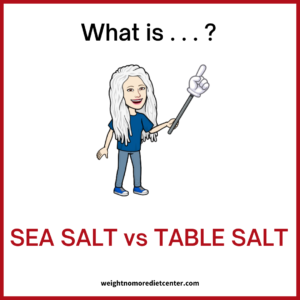
Sea salt and table salt have the same basic nutritional value, despite the fact that sea salt is often marketed as a more natural and healthy alternative. The most notable differences between sea salt and table salt are in their taste, texture and processing.
Sea salt is produced through evaporation of ocean water or water from saltwater lakes, usually with little processing. Depending on the water source, this leaves behind certain trace minerals and elements. The minerals add flavor and color to sea salt, which also comes in a variety of coarseness levels.
Table salt is typically mined from underground salt deposits. Table salt is more heavily processed to eliminate minerals and usually contains an additive to prevent clumping. Most table salt also has added iodine, an essential nutrient that helps maintain a healthy thyroid.
By weight, sea salt and table salt contain the same amount of sodium.
Regardless of which type of salt you prefer, limit total sodium to less than 1,500 milligrams per day.
